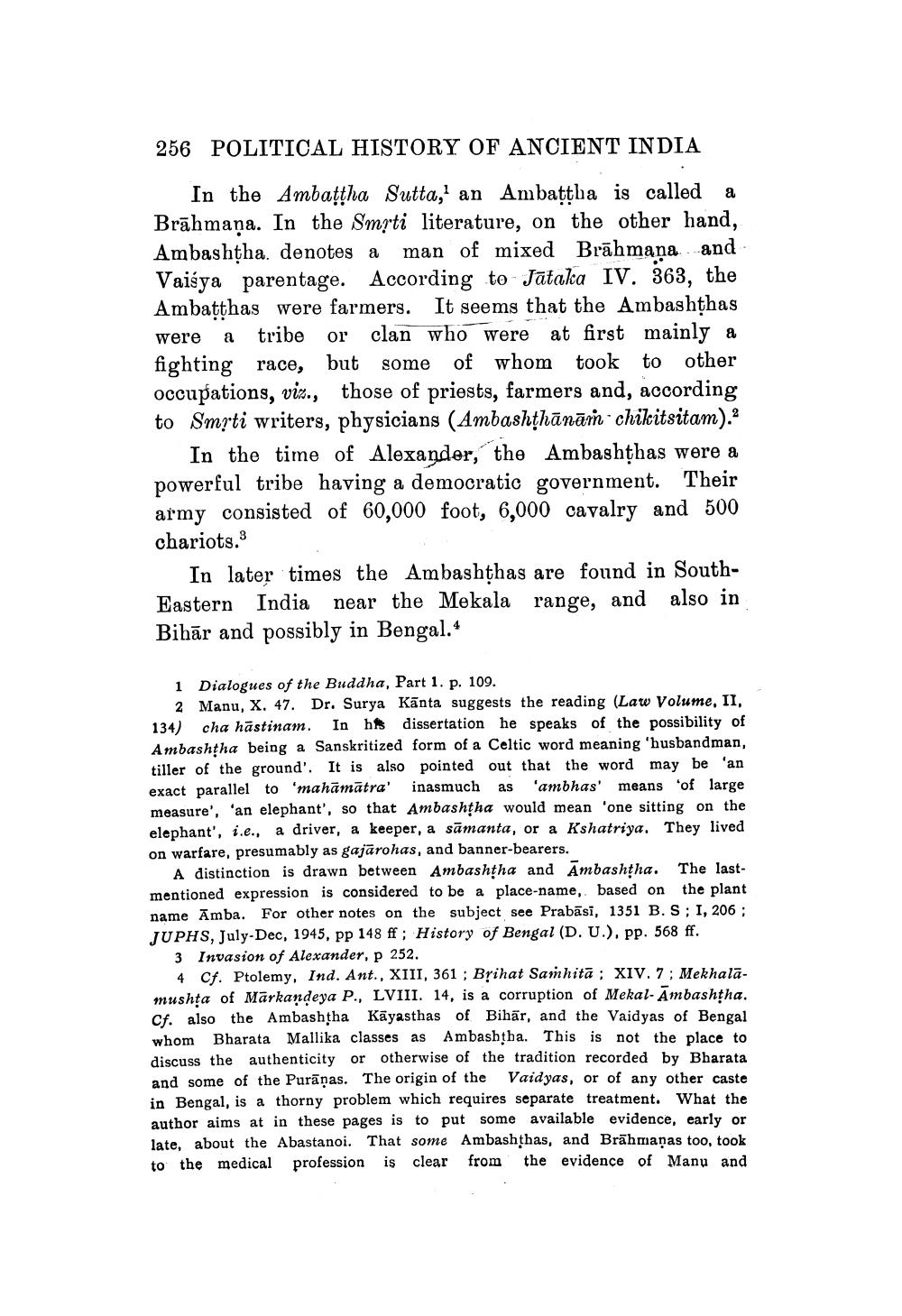________________
256 POLITICAL HISTORY OF ANCIENT INDIA
a
In the Ambaṭṭha Sutta, an Ambaṭṭha is called Brāhmaṇa. In the Smrti literature, on the other hand, Ambashṭha. denotes a man of mixed Brahmana and Vaisya parentage. According to Jataka IV. 363, the Ambaṭṭhas were farmers. It seems that the Ambashṭhas tribe clan who were or at first mainly a fighting race, but some of whom took to other occupations, viz., those of priests, farmers and, according to Smrti writers, physicians (Ambashṭhānam chikitsitam).
were
In the time of Alexander, the Ambashṭhas were a powerful tribe having a democratic government. Their army consisted of 60,000 foot, 6,000 cavalry and 500 chariots.3
a
In later times the Ambashṭhas are found in SouthEastern India near the Mekala range, and also in Bihar and possibly in Bengal.*
1
Dialogues of the Buddha, Part 1. p. 109. 2 Manu, X. 47. Dr. Surya Kanta suggests the reading (Law Volume, II, 134) cha hästinam. In his dissertation he speaks of the possibility of Ambashṭha being a Sanskritized form of a Celtic word meaning 'husbandman, tiller of the ground'. It is also pointed out that the word may be 'an inasmuch as 'ambhas' exact parallel to 'mahamatra' means of large measure', 'an elephant', so that Ambashtha would mean 'one sitting on the elephant', i.e., a driver, a keeper, a samanta, or a Kshatriya. They lived on warfare, presumably as gajarohas, and banner-bearers.
A distinction is drawn between Ambashṭha and Ambashṭha. The lastmentioned expression is considered to be a place-name, based on the plant name Amba. For other notes on the subject see Prabasi, 1351 B. S; I, 206; JUPHS, July-Dec, 1945, pp 148 ff; History of Bengal (D. U.), pp. 568 ff.
3 Invasion of Alexander, p 252.
4 Cf. Ptolemy, Ind. Ant., XIII, 361; Brihat Samhita: XIV. 7; Mekhalamushta of Markandeya P., LVIII. 14, is a corruption of Mekal- Ambashṭha. Cf. also the Ambashtha Kayasthas of Bihar, and the Vaidyas of Bengal whom Bharata Mallika classes as Ambashtha. This is not the place to discuss the authenticity or otherwise of the tradition recorded by Bharata and some of the Purāņas. The origin of the Vaidyas, or of any other caste in Bengal, is a thorny problem which requires separate treatment. What the author aims at in these pages is to put some available evidence, early or late, about the Abastanoi. That some Ambashthas, and Brahmaṇas too, took to the medical profession is clear from the evidence of Manu and




